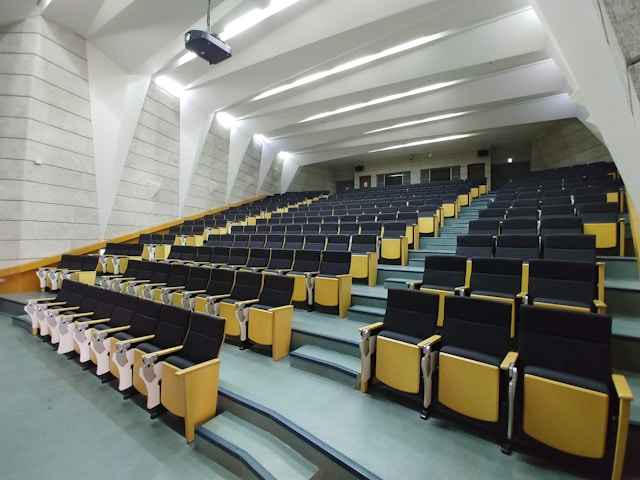Why ASUU Strikes Keep Disrupting Students’ Lectures — Causes, Consequences & Solutions
Every ASUU strike costs students months of lectures, creates anxiety, and delays graduations. Understanding why strikes recur helps students, parents and policymakers push for durable fixes rather than short-term announcements that end up unfulfilled. Below we explain the root causes, the real impact on students, and practical steps that can reduce future disruptions.
1. Repeatedly unfulfilled agreements
Most strikes follow the same pattern: ASUU negotiates formal agreements with the government covering funding, allowances, revitalisation projects and other commitments. When the government either delays or only partially implements those agreements, trust breaks down. For many academic staff the only remaining effective leverage to force full implementation is industrial action — which is why strikes keep recurring.
2. IPPIS vs UTAS — a technical argument that became political
One high-profile cause of conflict is the payroll/payment platform disagreement. The federal government favours IPPIS (Integrated Personnel and Payroll Information System) for central payroll management, while many university lecturers prefer UTAS (University Transparency and Accountability Solution) — a university-focused system developed to support autonomy and the sector’s specific needs. What might have been a technical implementation debate turned into a political standoff because it touches on university autonomy, data control and accountability for funds.
3. Chronic underfunding and decaying infrastructure
Public universities in Nigeria operate with ageing laboratories, insufficient research funding, overcrowded lecture theatres and under-maintained hostels. ASUU argues that without steady capital injections for renovation and equipment, teaching and research quality will continue to decline. When promised revitalisation funds do not materialise or arrive piecemeal, the union views strikes as a tool to force concrete funding commitments.
4. The human cost — students are the worst hit
Strikes disrupt the academic calendar. A four-year programme can extend to five or six years; exams get delayed and course sequencing breaks down. Students face extra living costs, delayed entry into the job market, missed professional exam windows and increased mental stress. Some students transfer to private institutions or overseas, resulting in a brain drain that weakens public universities in the long term.
5. The vicious cycle: sign, forget, warn, strike
The common loop looks like this: agreements are negotiated and signed → partial compliance or slow implementation → warnings and public statements → strike when items remain unresolved. Because this cycle has repeated for decades, skepticism and brittle trust now shape every negotiation, making lasting solutions harder to reach.
6. Structural reasons why strikes feel inevitable
- Weak enforcement: Agreements sometimes lack definite timelines or independent verification, allowing delays without clear penalties.
- Limited autonomy: Centralised control over budgets and appointments reduces universities’ ability to address problems locally.
- Political timing: Funding and policy choices are often influenced by election cycles and shifting priorities.
- Poor communication: Public posturing and antagonistic media exchanges escalate tensions instead of facilitating compromise.
7. What students and families can do now
Full national reform will take time. Meanwhile students can reduce the harm of strikes with practical steps:
- Document losses: Keep records of missed lectures, rescheduled exams and extra costs. Student unions can use this evidence when negotiating catch-up plans.
- Stay academically proactive: Form study groups, follow course outlines closely, and ask lecturers for reading lists or recorded lessons.
- Engage student unions: Push for clear contingency plans (modular exams, catch-up sessions, online make-ups) and demand transparency in negotiations.
- Build employability buffers: Use strike windows to learn marketable skills — coding, digital marketing, bookkeeping — so graduation delays have less impact on long-term prospects.
8. What policymakers and ASUU should consider
Lasting change requires structural reforms and political will. Key options include:
- Time-bound implementation: Agreements must include milestones, public timelines and independent verification.
- Independent mediation: Use neutral technical committees and respected academics to certify compliance and avoid public brinkmanship.
- Transparent funding: Publish detailed budgets for revitalisation funds and show how money is spent.
- Alternative pressure mechanisms: Explore non-disruptive dispute tools before full walkouts (e.g., targeted work-to-rule, arbitration, or court action).
- Student protection rules: Mandate minimum academic service levels and automatic catch-up structures when strikes occur.
9. The accountability call — who should do what?
Both government and ASUU share responsibility. The government must prioritise higher education funding and be transparent about timelines and expenditures. ASUU should pursue non-disruptive channels where possible and allow for neutral oversight of implementation. Students, parents and civil society must insist on public accountability: signed agreements should be visible to citizens, with clear dates and verification measures.
10. Quick resources and useful reading
To learn more, consider these sources:
- News coverage and investigative reports on recent ASUU actions and the IPPIS/UTAS debate (replace links with current local reporting you trust).
- Academic studies on the effects of industrial action on student outcomes and welfare.
- Government policy documents on university funding and payroll systems.
Suggested outbound links you can include where appropriate:
- Premium Times — education coverage
- Vanguard Nigeria — higher education reports
- University World News — global higher education context
Final word — Students deserve stability
ASUU strikes are not merely labour disputes; they are a symptom of long-term neglect and structural problems in the higher education sector. Students deserve continuous, high-quality teaching and timely graduation. To reduce strikes we need transparency, enforceable timelines, independent oversight and genuine prioritisation of university funding. Until those changes occur, students will continue to pay the price for systemic failure.
Related posts on Alphayem: The Health Dangers of Self-Medication in Nigeria, Why Every Nigerian Youth Needs Basic Computer Skills in 2025.
For more: About Us • Contact • Privacy Policy.

